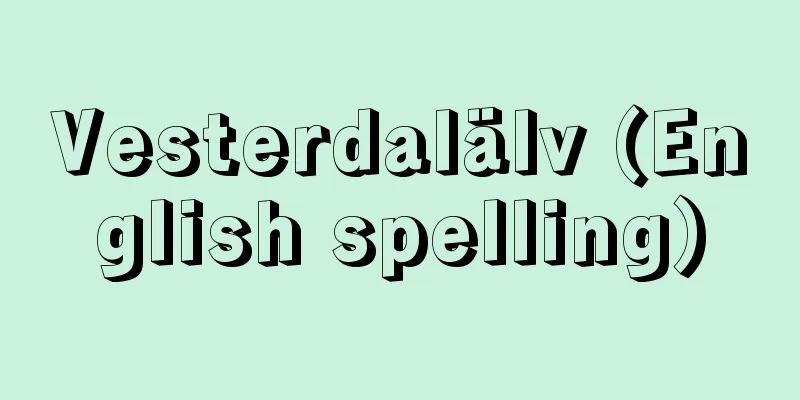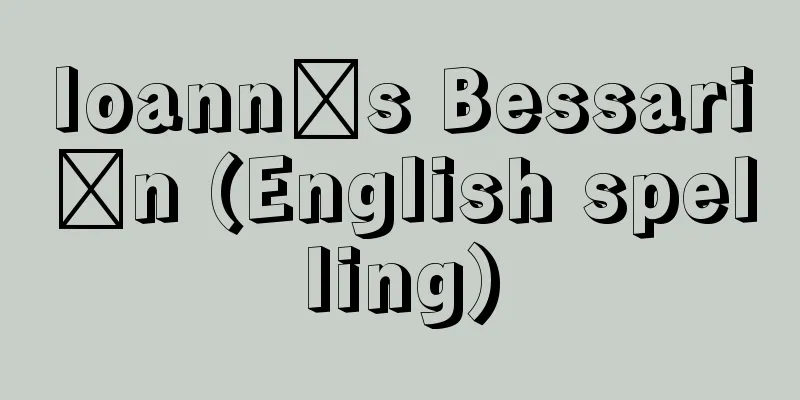Kibi dango - Kibi dango

|
A specialty dumpling of Okayama. It is also written as millet dumpling. It was created in 1856 (Ansei 3) when the first Asajiro of Koeido, at the recommendation of Okayama Domain's chief retainer Iki Sanensai, made millet dumplings, which had long been sold at a tea shop in the grounds of Kibitsu Shrine, into gyuhi sweets for tea ceremonies. The rice flour is made by adding white sugar and starch syrup, and adding a small amount of millet flour for flavor. The mixture is boiled in water and kneaded until it becomes translucent, then rolled into dumplings and coated with potato starch. The finished product has a pale yellow color and a refined appearance. Some are also coated with soybean flour. Using a similar method, mochi (rice cakes) made from millet cut into rectangles and coated with soybean flour are a specialty of Yugawara Onsen (Kanagawa Prefecture). During the Edo period, millet dumplings and millet mochi were already commercially available, but these were made by steaming and pounding glutinous millet flour, and were cheap snacks that could be used as an alternative to staple foods. They were also called kimi dango (kimi dango) because of their color, and were also made as tsukimi dango (moon viewing dango). Okayama's Kibi dango became famous after Momotaro, a fairy-tale hero who defeated the Kibi Oni, the Oni of Onigashima. However, millet is a crop cultivated using slash-and-burn agriculture, and has been the staple food of mountain villagers since the Nara period. The story of Momotaro reveals the truth behind how ancient rulers used millet dango as bait (exemption from paying tribute) to deceive dogs (spies), monkeys (mountain people), and pheasants (woodworkers), leading them to betray their superiors, the ohito (demons) (those in the central government's words), and thus destroy the demons. Before millet dango became a confectionery, poverty and sorrow were a part of its influence. [Fumio Sawa] Okayama Prefecture ©Okayama Tourism Federation "> Kibi dumplings Source: Shogakukan Encyclopedia Nipponica About Encyclopedia Nipponica Information | Legend |
|
岡山の名物団子。黍団子とも書く。創製は1856年(安政3)、広栄堂の初代浅次郎が、岡山藩家老伊木三猿斎(いきさんえんさい)の勧めで、吉備津(きびつ)神社境内の茶店に古くから商われていた黍団子を、茶席用の求肥(ぎゅうひ)菓子にこしらえたのが始まりである。糯米(もちごめ)粉に上白糖と水飴(みずあめ)を加え、風味づけに少量の糯黍粉を混ぜ、湯炊きして半透明になるまで練り上げ、団子に丸めて表面にかたくり粉をまぶす。できあがりは淡い黄色みを帯び品のよい姿である。また表面にきな粉をまぶしたものもある。同様の製法で、長方形に切り、きな粉をまぶした黍餅(もち)が湯河原温泉(神奈川県)の名物となっている。江戸時代には、すでに黍団子や黍餅が商品化されていたが、これらは糯黍粉を蒸して搗(つ)いたもので、主食にかえられるような駄菓子であった。また色合いからきみ団子ともいい、月見団子としてもつくられた。 岡山の吉備団子は、吉備の鬼、鬼ヶ島の鬼退治をしたおとぎ話の英雄桃太郎にちなんで有名になった。しかし、黍は焼畑農耕の作物であり、奈良時代から山村民の主食であった。桃太郎の話には、古代権力者が黍団子を餌(えさ)(貢納免除)に、犬(密偵)、猿(山人)、雉子(きじ)(木地(きじ)屋)をだまし、彼らの氏の上である大人(おおひと)(中央権力者のいう鬼)への裏切り行為に走らせることで、鬼を滅亡させていった真相が秘められている。菓子以前の黍団子には、貧困と悲哀が介在していた。 [沢 史生] 岡山県©公益社団法人岡山県観光連盟"> 吉備団子 出典 小学館 日本大百科全書(ニッポニカ)日本大百科全書(ニッポニカ)について 情報 | 凡例 |
<<: Kibitsu Shrine (Hiroshima)
Recommend
Théâtre de L'Est Parisien
...TNP's main repertoire includes works by Br...
Calaverite - Calaverite
A gold telluride (chemical formula AuTe 2 ). It i...
Loncocarpus
...It was an effective fishing method because of ...
modulus
...Mathematical term. [Congruence of integers] Wh...
diphthong
…cart[kːt]〈car〉. (7) Diphthongs A syllable is for...
Akame 48 Waterfalls
This waterfall is located in Nabari City in the m...
Castillo, PRde - Castillo
...Population: 121,739 (1991), metropolitan popul...
Trusteeship - Shintakutouchi (English spelling) trusteeship
The system established by the United Nations as a...
Karukaya Doshin Tsukushi no Iedzuto
Joruri. Historical piece. Five acts. Collaboration...
Shunro Katsukawa
...An ukiyo-e artist active in the late Edo perio...
Institute of Marxism-Leninism
An affiliated organization of the Central Committe...
Two people in hakama - Two people in hakama
The title of a Kyogen piece. Muko Kyogen. The gro...
Myth - Shinwa (English spelling) myth
It is difficult to give a clear definition of myt...
Salicornia herbacea; glasswort
An annual plant of the Chenopodiaceae family. It g...
Factor scores - Indicators
...If we write this model as a formula for the ca...









